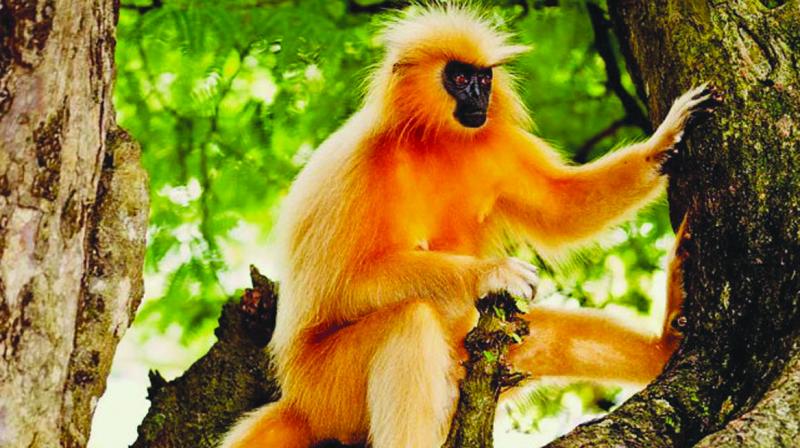Golden Langur
2022 FEB 9
Preliminary >
Environment and Ecology > Species extinction & protection > Species in news

Why in news?
- Neighbours of Kakoijana Reserve Forest, a Golden Langur habitat in western Assam have opposed a move by the State government to upgrade it to a wildlife sanctuary.
About Golden Langur:
- Gee’s golden langur (Trachypithecus geei), an Old World monkey endemic to the semi-evergreen and mixed-deciduous forests straddling India (Assam) and Bhutan.
- It has a black face and a long tail up to 50 cm (19.69 in) in length.
- It lives in high trees and has an herbivorous diet of ripe and unripe fruits, mature and young leaves, seeds, buds and flowers.
- The average group size is eight individuals, with a ratio of several females to each adult male.
- It is listed as among the world’s 25 most endangered primates.
Habitat:
- It is endemic to western Assam and southern Bhutan.
- Their habitat is restricted to the region surrounded by four geographical landmarks: the foothills of Bhutan (North), Manas river (East), Sankosh river (West), and Brahmaputra river (South).
Major threat to the species:
- Restricted Habitat:
- Their habitat is restricted by natural boundaries further increasing the threat of extinction.
- Habitat Fragmentation:
- Their habitat in Assam has fragmented drastically especially after a thrust on rural electrification and massive deforestation.
- Inbreeding:
- Obstructions such as wires, and gaps in the forest due to felling, have increased the threat of inbreeding among golden langurs.
Protection Status:
- IUCN List of Threatened Species: Endangered
- Convention on International Trade in Endangered Species of Wild Fauna and Flora (CITES): Appendix I
- Wildlife Protection Act, 1972: Schedule I.
PRACTICE QUESTION:
Which of the statements is not correct regarding ‘Golden Langur’?
(a) It is endemic to Western Ghats
(b) It listed as ‘Endangered’ in IUCN List of Threatened Species
(c) It lives in high trees and has an herbivorous diet
(d) Their habitat has fragmented drastically especially after a thrust on rural electrification
Answer
